FEATURES
Three high and one low makes the pipeline safer
This means it has higher strength, higher tenacity, higher rigidity, and lower linear expansion coefficient, which really fetches up the limitations of ordinary PP-R pipe specialized in the riser, transparent, and hot water pipe.
Non-deformation pipeline, more attractive appearance
High-performance composite pipes PP-R have a three-layer structure with PP-R material in the inner and outer layers and a reinforced composite material in the middle layer. The effect of the mid-layer was performed in the reinforced pipeline and reduced the effect of the coefficient of linear expansion. The linear expansion coefficient of the high-performance composite pipe only has 1/3 of ordinary PP-R, which is close to the aluminum-plastic composite pipe. There is no noticeable "thermal expansion and contraction" during installation and use, resulting in a flatter and more aesthetically pleasing appearance.
Resist high temperature, leak explosion-proof pipe
Given the right conditions, high-performance composite pipes can be used for long periods of time at pressures below 90℃, especially for hot water pipes.
Easy to install and construct
It can be connected with ordinary PP-R heat fusion welder and heat insertion fittings, with complete fittings, convenient and reliable structure.
ADVANTAGES
● Greatly reduced linear expansion coefficient,30% of that of PPR, which is close to that of the stable composite pipes.
● Higher strength and stability of dimension.
● The pressure resistance is greatly improved, with 25% more pressure load than PPR under the same conditions of use.
● Improved resistance to impulse under low temperatures.
● Excellent resistance to high temperature. It can be used at 90℃ for the long term.
● Socket fusion connection with PP-R fittings, credible and convenient.
● Smooth and sanitary, being a good selection for a drinkable water system.
Applications
● Distribution of cool and hot water;
● Duct for drinkable water system;
● Pipes for kinds of high-temperature and low-temperature heating systems;
● Pipes for heating and cooling settings in solar energy systems;
● Connecting pipe for air conditioners;
SOCKET FUSION JOINT FOR PPR PIPE SYSTEM
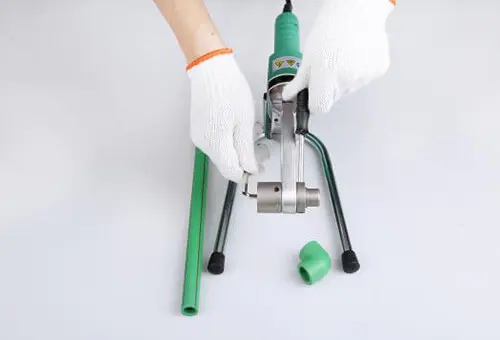
1 Fusion Preparation
Choose the suitable sockets and install, and prepare the fusion machine, tools, and fusion material
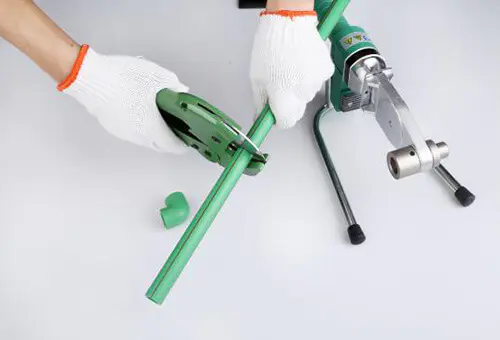
2 Cutting the PPR pipe
Cutting the requested length with the specified PPR pipe cutter
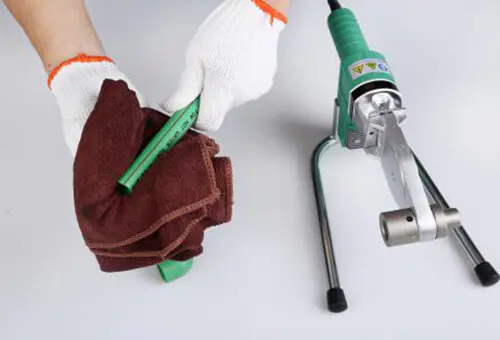
3 PPR pipe Cleaning
Cleaning the PPR pipe welding Surface with alcohol
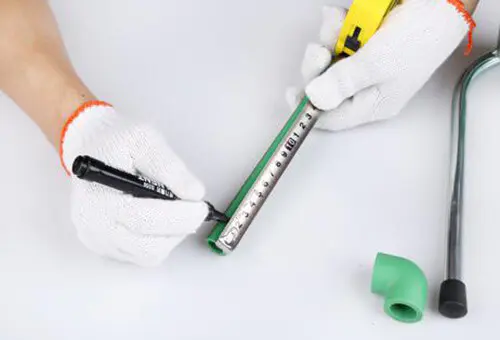
4 Measure Depth
Marking the suitable depth for specified PPR pipe
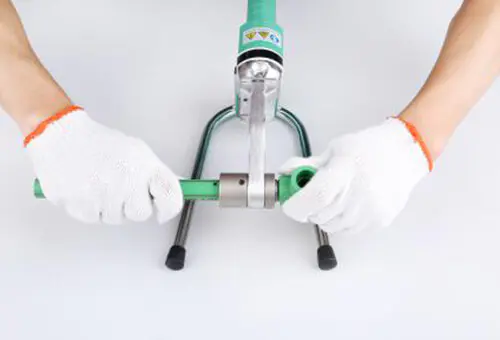
5 Heating
Push the PPR pipe and PPR fitting into the welding tool up to the welding depth without turning
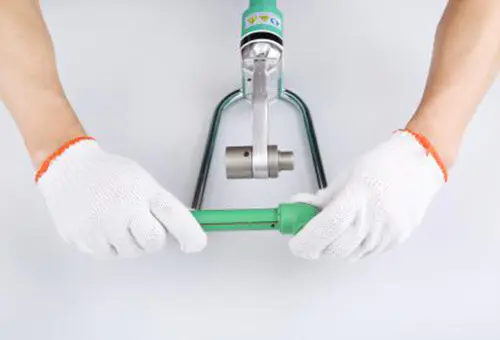
6 Fusion and Connecting
Push the heated pipe fitting exactly and suitable adjustments, adjustment should be finished within 5 seconds
The PPR Pipe Fusion Date Sheet
| Diameter (mm) | Welding Depth (mm) | Heating Time (s) | Welding Time (s) | Cooling Time (min) |
| 20 | 14 | 5 | 4 | 2 |
| 25 | 15 | 7 | 4 | 2 |
| 32 | 16.5 | 8 | 6 | 4 |
| 40 | 18 | 12 | 6 | 4 |
| 50 | 20 | 18 | 6 | 4 |
| 63 | 24 | 24 | 8 | 6 |
| 75 | 26 | 30 | 8 | 8 |
| 90 | 29 | 40 | 8 | 8 |
| 110 | 32.5 | 50 | 10 | 8 |
Remarks :
→ The heating time for the PPR pipe should comply with the requirement of PPR products and be adjusted according to the working temperature.when the working temperature is bellow 5℃,the heating time should be extended by 50%.
→ When the heating was finished, quickly remove the pipe and fitting from the welding tools, join them immediately without turning until the marked welding depth is covered by the bead of PPR from the fittings
→ The joint elements have to be fixed during the specified assembly time, after the cooling period, the fusion joint is ready for use